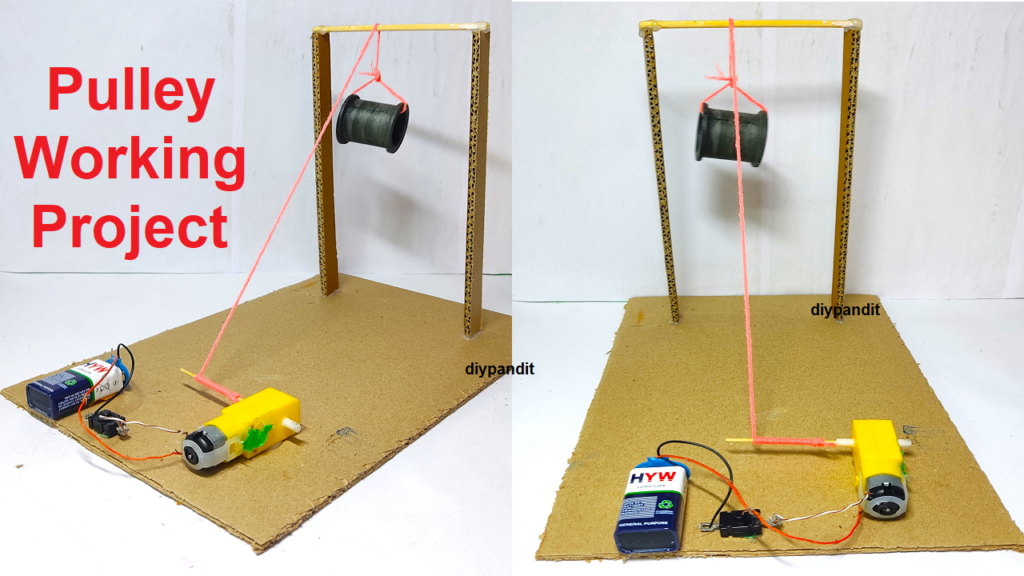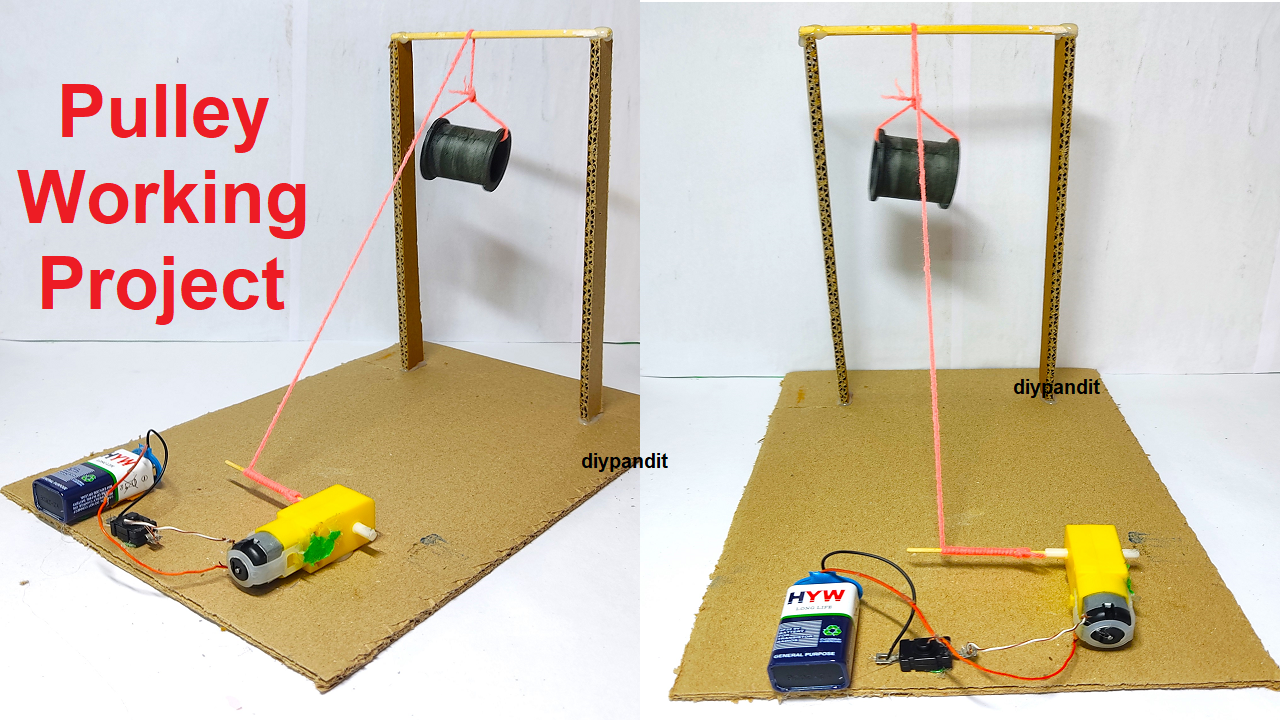Creating a pulley working science project for an exhibition can be an exciting and educational endeavor.
Here’s a simple DIY project using a robotic motor, pencil or weight, and a chopstick:

Materials Needed:
- Robotic motor (e.g., a small DC motor)
- Pencil or weight
- Chopstick or wooden dowel
- Cardboard or sturdy paper
- String or thread
- Battery pack (with batteries)
- Wire
- Glue or tape
- Small pulley wheel (optional)
Steps to Create the Pulley Working Model:
Step 1: Motor Mount:
- Mount the robotic motor securely on a piece of cardboard or sturdy paper. You can use glue or tape to fix it in place.
Step 2: Attach Pencil or Weight:
- Attach a pencil or a small weight to the shaft of the motor. You can use tape or a small clamp for this purpose.
Step 3: Create the Pulley:
- Cut the chopstick or wooden dowel to the desired length, ensuring it is longer than the distance you want to span.
- Optionally, attach a small pulley wheel to the chopstick using glue or tape. This will make it easier to raise and lower objects.
Step 4: Mount Pulley:
- Attach the chopstick to a stable support. You can use another piece of cardboard or any suitable structure.
- If you’ve attached a pulley wheel, make sure it is aligned with the motor’s pulley.
Step 5: Connect Motor and Pulley:
- Connect the motor and the chopstick using a loop of string or thread. Make sure the string is securely attached to both the motor’s pulley and the chopstick.
Step 6: Wiring:
- Connect the robotic motor to a battery pack using wires. Ensure the polarity is correct to make the motor spin in the desired direction.
Step 7: Power Up:
- Insert batteries into the battery pack and turn it on. The motor should start spinning, and the string should lift the pencil or weight.
Step 8: Display and Explain:
- Set up your pulley working model at the exhibition table.
- Explain how pulleys work to transmit force and motion, making tasks like lifting objects easier.
Optional Enhancements:
- Experiment with different weights and lengths of string to observe how they affect the system.
- Explore the concept of mechanical advantage by varying the size of the pulley wheel or using multiple pulleys.
This pulley working model demonstrates the basic principles of a pulley system, showing how mechanical devices can make lifting objects more efficient.
It’s an engaging project for a science exhibition, allowing visitors to see firsthand how pulleys function in a simple and interactive way.

